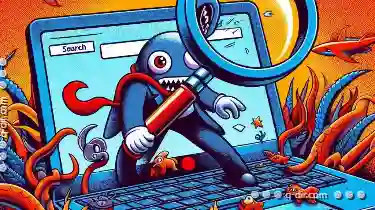This phenomenon occurs when an attempt at abstraction leads to a level of complexity or deception that is not immediately apparent to users, ultimately ...
 complicating their interaction with the software rather than simplifying it. In this blog post, we will explore what over-filtering is, its causes, consequences, and how to strike a balance between abstraction and clarity in navigation and display systems. In the realm of software development, particularly in the areas of navigation and display systems, there exists a subtle but significant danger that can lead to frustration and user dissatisfaction-over-filtering.
complicating their interaction with the software rather than simplifying it. In this blog post, we will explore what over-filtering is, its causes, consequences, and how to strike a balance between abstraction and clarity in navigation and display systems. In the realm of software development, particularly in the areas of navigation and display systems, there exists a subtle but significant danger that can lead to frustration and user dissatisfaction-over-filtering.1. Understanding Over-Filtering
2. Causes of Over-Filtering
3. Consequences of Over-Filtering
4. Strategies to Avoid Over-Filtering
5. Conclusion
1.) Understanding Over-Filtering
What is Over-Filtering?
Over-filtering can be defined as the excessive use of filters or visual cues that obscure rather than clarify the underlying information architecture within an application or system. This often results in a situation where users are presented with too many options, leaving them confused about what they should see or do next. Instead of providing clear and direct pathways to content, over-filtering can lead to a maze of choices that users feel overwhelmed by rather than guided through.
2.) Causes of Over-Filtering
1. Lack of User Research:
Developers might implement filters based on assumptions about what the user needs without conducting thorough research or testing these assumptions with real users. This can lead to overly complex interfaces that serve no practical purpose.
2. Hubris in Abstraction:
Some developers may become enamored with abstract concepts and try to incorporate them into their systems, believing they are being clever by simplifying the interface through such means as filters. However, this abstraction can quickly become a barrier for users who struggle to understand how to navigate these complex layers of filtering.
3. Fear of Empty States:
To avoid showing empty states (i.e., visual indicators that there is nothing to display), developers might over-filter content to ensure that something is always present in the view. This results in a perpetual state where users see filtered content, but it may not be relevant or useful.
3.) Consequences of Over-Filtering
1. User Frustration:
Users often become frustrated when faced with overwhelming choices and complex filtering systems that do not seem to serve any clear purpose beyond complicating the interface. This can lead to a negative perception of the product or service, potentially resulting in user dropout or avoidance behavior.
2. Decreased Engagement:
When users struggle to find what they need due to poor navigation, they may become disengaged with the content and stop using the system altogether. This not only affects user satisfaction but also impacts retention rates and potential revenue for businesses.
3. Loss of Trust:
Systematic over-filtering can lead to a loss of trust in the software, as users feel manipulated or confused by its design. Once a user feels their experience is being compromised for reasons that seem arbitrary (due to poor filtering practices), they may no longer see value in continuing to interact with the platform.
4.) Strategies to Avoid Over-Filtering
1. Conduct User Testing:
Regularly testing interfaces and navigation methods with real users can provide valuable insights into how well your filters are working for them. This iterative process helps ensure that any introduced complexity serves a clear, practical purpose rather than complicating matters unnecessarily.
2. Simplify Filters Gradually:
Avoid overwhelming users from the outset by introducing filter options gradually. Start with fewer choices and increase interactivity only when it is clearly beneficial to the user experience. This approach allows users to become accustomed to more refined navigation tools as they grow more comfortable with the system.
3. Use Clear Visual Cues:
Ensure that visual elements such as icons, labels, and color schemes are consistent and meaningful throughout the interface. This will help users understand at a glance what actions are possible without getting bogged down in too many options or filters.
5.) Conclusion
Over-filtering is a common pitfall in navigation and display systems that can lead to diminished user experience, loss of trust, and decreased engagement. To avoid this trap, it's crucial to focus on research-backed design principles that prioritize user needs over abstract cleverness. By conducting thorough testing with real users and gradually introducing complexity through clear visual cues and meaningful interactions, you can create a more intuitive and satisfying navigation and display system for all users.

The Autor: / 0 2025-04-05
Read also!
Page-

Why Power Users Avoid Single-Pane File Managers
We often find ourselves seeking out the most efficient and powerful tools to manage our digital lives. Among the various types of file managers ...read more

Columns: The User Interface Equivalent of a Relational Database
They are often likened to the windows through which users view and manipulate complex systems. In this blog post, we will explore the concept that ...read more

Why Explorer's Search Function Remains a Cruel Joke.
Windows Explorer (often colloquially referred to as File Explorer) is the default file manager for many users on Microsoft Windows operating systems. ...read more